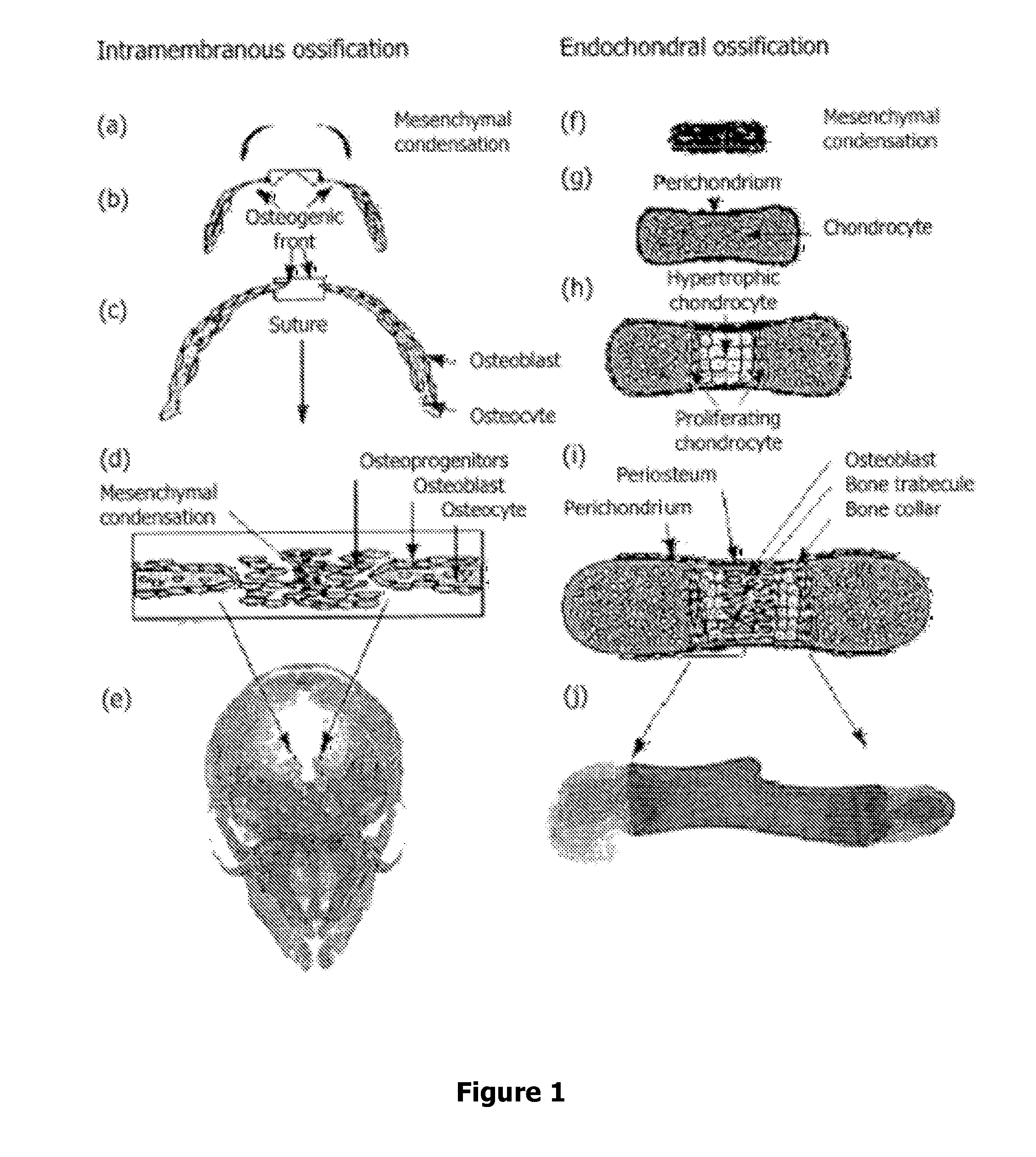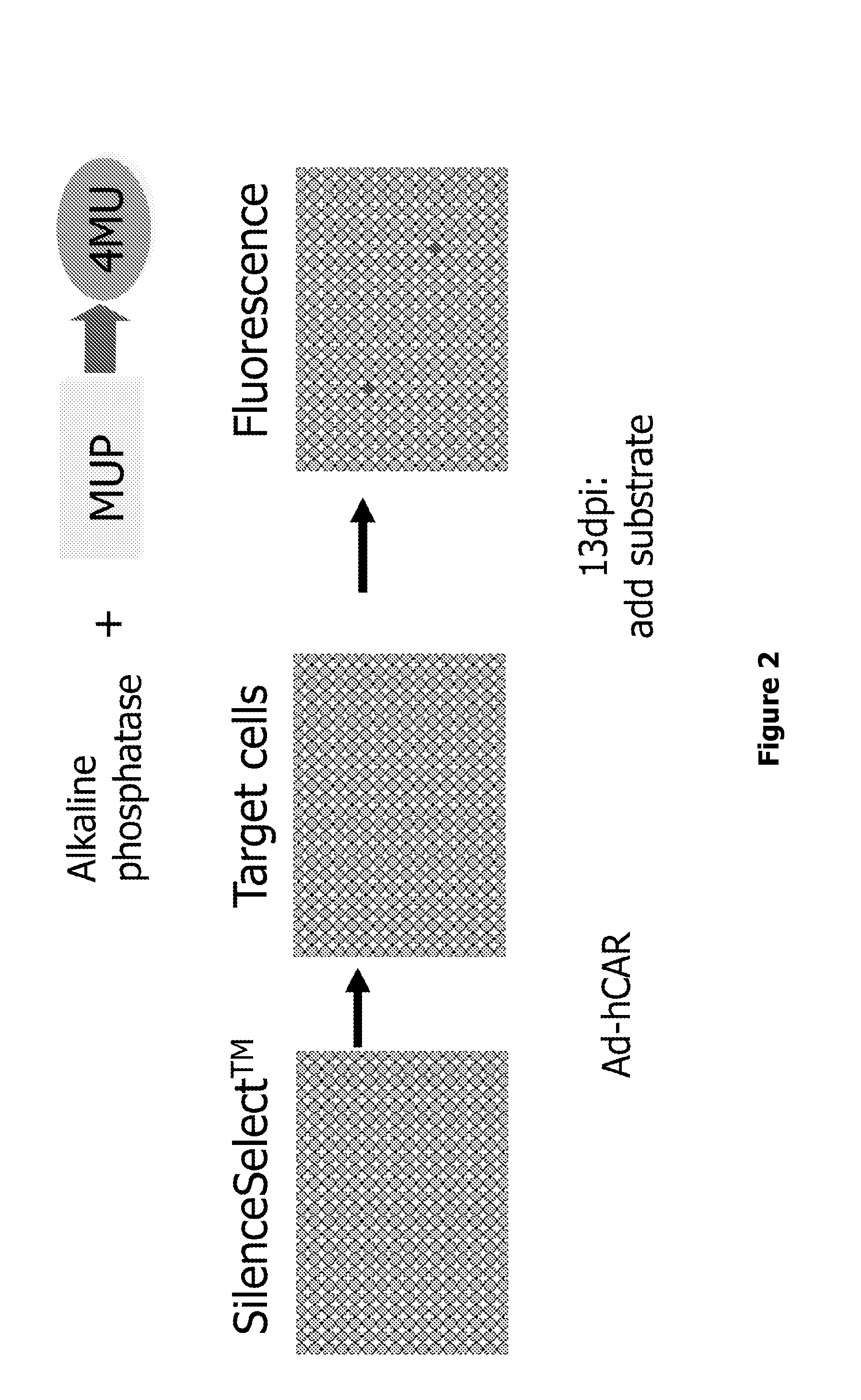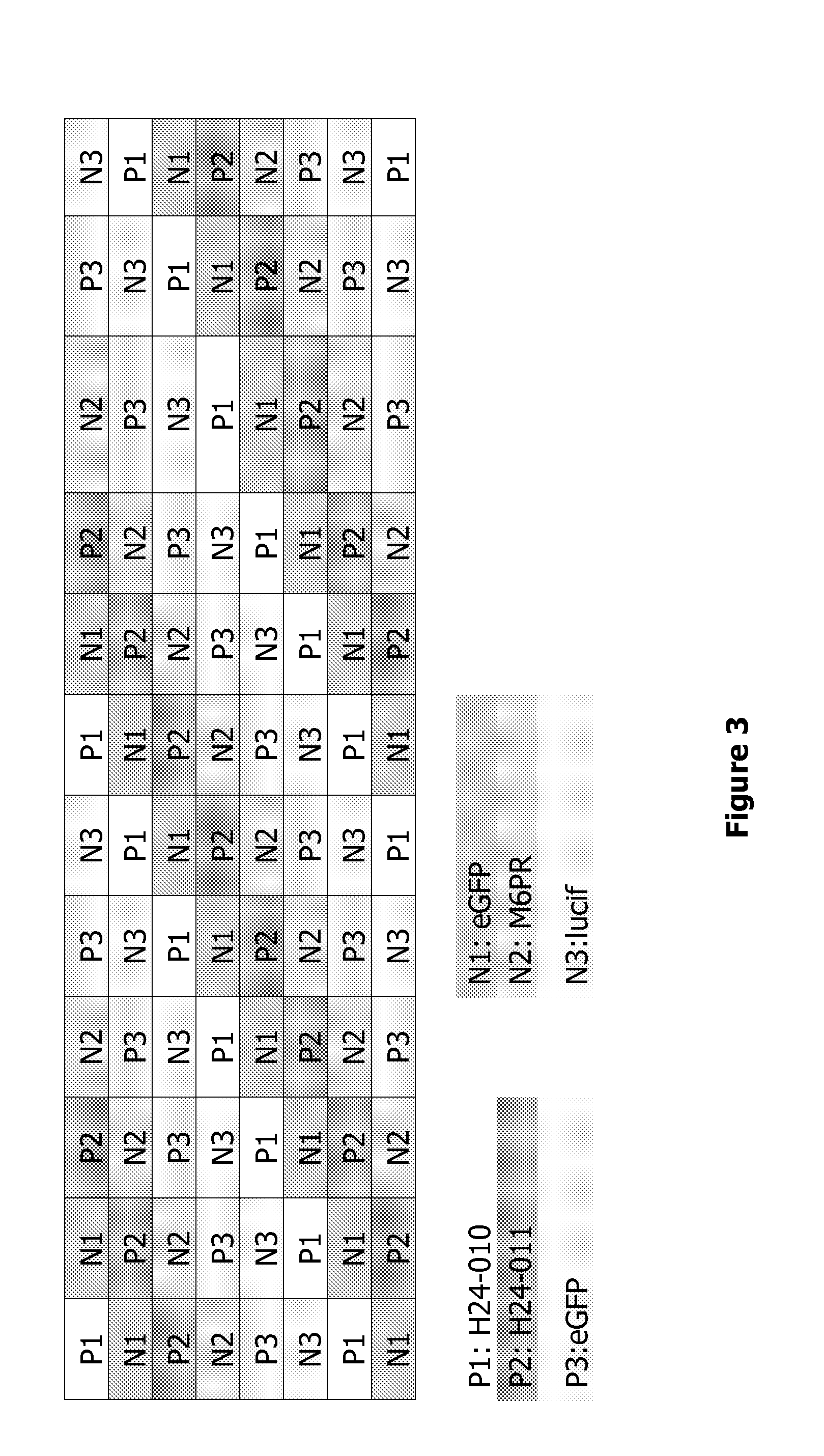Methods, Agents, and Compound Screening Assays for Inducing Differentiation of Undifferentiated Mammalian Cells into Osteoblasts
a technology of undifferentiated mammalian cells and compound screening assays, applied in the field of mammalian diseases, can solve the problems of limiting the usefulness of pth as systemic therapeutic agents, cumbersome treatment, and high cost of treatment, and achieves better directed and controlled treatment, lower morbidity during recovery, and high proliferation rate
- Summary
- Abstract
- Description
- Claims
- Application Information
AI Technical Summary
Benefits of technology
Problems solved by technology
Method used
Image
Examples
example 1
Development of a High-Throughput Screening Method for the Detection of Endogenous Alkaline Phosphatase
[0131]Principle of the Assay
[0132]Mesenchymal progenitor cells (MPCs) are determined to differentiate into osteoblasts in the presence of appropriate factors (e.g. BMP2). An assay to screen for such factors was developed by monitoring the activity of alkaline phosphatase (AP) enzyme, an early marker in the osteoblast differentiation program. MPCs were seeded in 384 well plates and simultaneously co-infected one day later with adenoviruses encoding the human coxsackie and adenovirus receptor (hCAR; Ad-hCAR) and individual siRNA adenoviruses (Ad-siRNA) from the SilenceSelect™ collection. AdC15-hCAR / AdC20-hCAR co-infection increases the AdC01-siRNA infection efficiency. Cellular AP activity was determined 13 days after the start of the infection (13 dpi). FIG. 2 illustrates the principle of the assay.
[0133]Development of the Assay
[0134]MPCs were isolated from bone marrow of healthy vol...
example 2
Screening of 2760 Ad-siRNA Adenoviruses in the Osteogenesis Assay
[0140]The optimized protocol for screening the SilenceSelect library is the following: on day 0, MPC cells are seeded in black 384 well plates with clear bottom (Costar or Nunc) in 60 μl medium at a density of 500 cells per well. One day later, 1 μl Ad-siRNA virus from the SilenceSelect™ collection, stored in 384 well plates (estimated titer of 2.5×109 viral particals per ml) and 5 μl of Ad-hCAR solution (total MOI=155), dispensed in 96 well V-bottom plates, is transferred with the aid of a 96 / 384 channel dispensor (Tecan Freedom 200 equipped with TeMO96, TeMO384 and RoMa, Tecan AG, Switzerland) from the wells of a 96 well plate containing the Ad-hCAR solution to each of the wells of the 384 well plates containing MPCs. The KD control plate was run under the same conditions as the aliquot plates from the SilenceSelect collection. All Ad-siRNA viruses were screened in duplicate, with each singular on a different MPC pla...
example 3
Target Identification Using the AP Assay
[0142]After performing these 2 screens, the data obtained from measuring the AP activity were analyzed as follows: the background was calculated by taking the mean of the data points from all the plates except the control plate. A cut-off value for hit calling was calculated by adding 3 times the standard deviation of all data points, excluding the control plate. Each data point was analyzed for scoring above or under the cut-off. Only Ad-siRNAs inducing endogenous AP activity levels above the cut-off were of further interest. Hits were prioritized according to their scoring in single or duplo, in one or both of the screens. Data were collected for 2688 Ad-siRNA virus constructs representing 2657 independent KD constructs and are listed in table 2. One of the identified hits has been shown to be a bone anabolic factor before and therefore validates the assay:
[0143]H24-241: BMP3
[0144]BMP3 is a member of the bone morphogenetic protein family of ...
PUM
 Login to View More
Login to View More Abstract
Description
Claims
Application Information
 Login to View More
Login to View More - R&D
- Intellectual Property
- Life Sciences
- Materials
- Tech Scout
- Unparalleled Data Quality
- Higher Quality Content
- 60% Fewer Hallucinations
Browse by: Latest US Patents, China's latest patents, Technical Efficacy Thesaurus, Application Domain, Technology Topic, Popular Technical Reports.
© 2025 PatSnap. All rights reserved.Legal|Privacy policy|Modern Slavery Act Transparency Statement|Sitemap|About US| Contact US: help@patsnap.com



